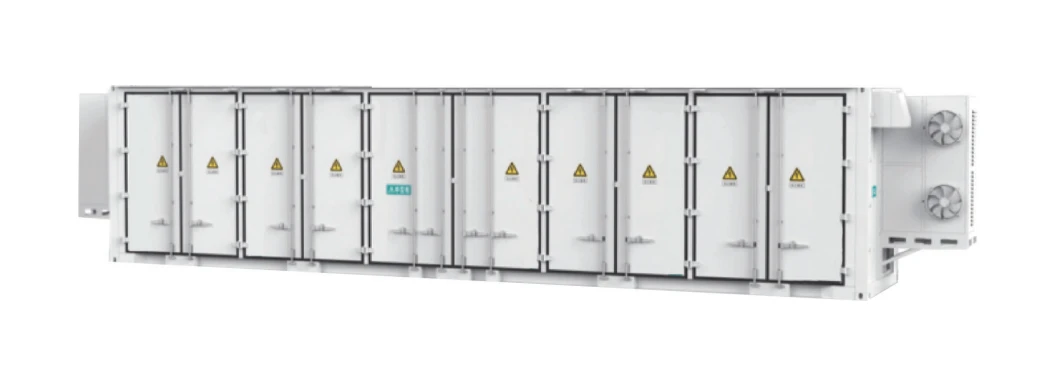
Авг . 12, 2025 00:40 Back to list
Energy Management System: Optimize & Save | OEM EMS Solutions
The Imperative of Advanced Energy Management Systems in Modern Industry
In today's rapidly evolving industrial landscape, optimizing energy consumption and ensuring grid stability are paramount for operational efficiency and sustainability. An effective energy management system (EMS) is no longer a luxury but a critical component for businesses aiming to reduce costs, comply with environmental regulations, and enhance overall resilience. These sophisticated systems integrate various technologies to monitor, control, and optimize energy usage across diverse applications, from large-scale industrial complexes to smart grid infrastructures. By providing real-time data and actionable insights, an EMS empowers decision-makers to identify inefficiencies, predict demand, and implement proactive strategies for energy conservation. This holistic approach not only translates into significant financial savings but also contributes to a more sustainable and responsible operational footprint.
The global shift towards renewable energy sources and the increasing complexity of modern power grids further underscore the need for robust energy management system solutions. Industries are facing mounting pressure to meet stringent energy efficiency targets while simultaneously ensuring uninterrupted power supply. An advanced EMS facilitates this delicate balance by enabling seamless integration of distributed energy resources, managing peak loads, and enhancing the reliability of power delivery. This comprehensive overview will delve into the technical intricacies, practical applications, and tangible benefits that modern EMS solutions offer to B2B stakeholders, emphasizing their role in driving industrial innovation and operational excellence.
Industry Trends and Technological Evolution of EMS
The market for energy management system solutions is experiencing significant growth, driven by key trends such as digitalization, the Internet of Things (IoT), and artificial intelligence (AI). Smart sensors and advanced analytics are transforming how energy data is collected and processed, moving beyond simple metering to predictive maintenance and anomaly detection. According to recent market analyses, the global EMS market is projected to reach over $100 billion by 2030, with a compound annual growth rate (CAGR) exceeding 15%. This growth is particularly fueled by the increasing adoption of smart grid technologies and the integration of battery energy storage systems (BESS), like the Centralized Energy Storage System, which require sophisticated EMS to manage charge/discharge cycles, grid interaction, and demand-side management.
Key technological advancements include the development of cloud-based EMS platforms, offering scalability and remote accessibility, and the integration of machine learning algorithms for enhanced forecasting and optimization. These trends enable businesses to achieve higher levels of energy efficiency, reduce their carbon footprint, and comply with evolving regulatory frameworks such as ISO 50001 for energy management. Furthermore, the rise of specialized solutions, including OEM energy management system offerings, allows manufacturers to embed sophisticated energy intelligence directly into their products, providing a comprehensive, integrated solution for their end-users from the outset. This pre-integrated approach streamlines deployment and ensures optimal performance tailored to specific equipment or system requirements.
The emphasis on demand response programs and real-time energy trading is also shaping the future of EMS. Systems are becoming more intelligent, capable of interacting dynamically with grid operators and electricity markets to buy and sell energy at optimal times, further maximizing economic benefits. This level of sophistication highlights the transition from reactive energy monitoring to proactive energy strategy, where an energy management system acts as a strategic asset for competitive advantage.
Core Technical Parameters and Specifications
A robust energy management system is defined by its core technical parameters, which dictate its performance, scalability, and suitability for specific industrial applications. Understanding these specifications is crucial for B2B purchasers to select a system that aligns with their operational demands and future growth. Key parameters often include data acquisition rates, processing capabilities, communication protocols, and system integration capacities. For instance, a high-frequency data acquisition rate ensures real-time monitoring and rapid response to load changes, critical for maintaining grid stability and preventing costly disruptions.
Below is a table summarizing typical technical parameters for a high-performance energy management system suitable for industrial and utility-scale applications:
| Parameter | Description | Typical Range/Value |
|---|---|---|
| Data Acquisition Rate | Frequency of data collection from sensors/meters. | 1-50 milliseconds (ms) |
| Processing Capacity | Ability to handle simultaneous data streams and computations. | 10,000+ data points/second |
| Communication Protocols | Supported industry standards for device communication. | Modbus TCP/IP, OPC UA, IEC 61850, DNP3 |
| Scalability | Capacity for expansion in monitored points and functionalities. | Modular architecture, cloud integration |
| Response Time (Control) | Time from command issuance to device action. | < 100 ms for critical controls |
| Data Storage | Capacity and retention period for historical data. | Years of high-resolution data (on-premise/cloud) |
| Cybersecurity Standards | Adherence to industry cybersecurity best practices. | IEC 62443, NIST Framework |
These parameters collectively ensure that an energy management system can provide precise control, reliable monitoring, and robust data integrity, which are foundational for achieving significant energy savings and operational stability. A well-designed system, like a centralized energy storage system’s control unit, integrates these technical capabilities to offer a holistic view and precise management of complex energy ecosystems.
Manufacturing Process and Quality Assurance for EMS Components
The robust performance and longevity of an energy management system heavily rely on the meticulous manufacturing processes and stringent quality control applied to its components, particularly for critical hardware such as sensors, controllers, and communication modules. While a complete EMS is a software and hardware integration, its physical components undergo precise fabrication. For example, the enclosures for industrial-grade EMS controllers are often made from high-grade aluminum or stainless steel, fabricated through processes like die-casting or CNC machining to ensure durability and resistance to harsh industrial environments. These materials provide excellent corrosion resistance, crucial for applications in petrochemical or wastewater treatment plants.
Key manufacturing steps include precision component fabrication, automated assembly of printed circuit boards (PCBs) with surface-mount technology (SMT), and rigorous calibration. Each stage adheres to international standards such as ISO 9001 for quality management and ISO 14001 for environmental management. Sensors, for instance, are calibrated in controlled environments to ensure measurement accuracy within specified tolerances, often to ANSI C12.20 standards for electricity meters. Post-assembly, functional testing simulates various operational scenarios, including extreme temperature and humidity conditions, electromagnetic interference (EMI) tests, and vibration analysis to ensure reliability over an extended operational lifespan, typically exceeding 15-20 years for critical components.
For specialized applications, such as an OEM energy management system integrated into a Centralized Energy Storage System, components might also undergo specific certifications like UL 9540 for battery energy storage safety. This rigorous testing and adherence to standards ensure that the EMS components not only meet performance specifications but also offer superior durability, energy efficiency through optimized designs, and corrosion resistance for prolonged operation in demanding sectors like metallurgy and water supply. This commitment to quality from raw material selection through final assembly guarantees that the installed EMS delivers consistent and reliable performance throughout its operational life.
Diverse Application Scenarios and Proven Advantages
The versatility of an energy management system allows for its deployment across a multitude of industries, each benefiting from its specific capabilities. In large-scale manufacturing facilities, an EMS can optimize the energy consumption of heavy machinery, HVAC systems, and lighting, leading to significant reductions in operational expenditure. For instance, in a typical automotive plant, an advanced EMS can achieve 10-15% energy savings by intelligently managing peak demand and optimizing equipment run times, reducing overall electricity costs.
In commercial buildings, an energy management system ems integrates with building management systems (BMS) to fine-tune energy use based on occupancy, weather conditions, and time-of-day tariffs. This leads to enhanced occupant comfort while minimizing utility bills. For data centers, where power reliability and cooling efficiency are paramount, an EMS monitors power usage effectiveness (PUE) and manages uninterruptible power supplies (UPS) and cooling units, ensuring uptime and reducing energy overhead. A recent case study showed a data center achieving a 20% reduction in cooling energy by deploying an AI-driven EMS.
Furthermore, in the burgeoning renewable energy sector, an energy management system is vital for integrating intermittent sources like solar and wind power with the grid or local loads. It manages energy storage solutions, forecasts generation, and optimizes dispatch, ensuring grid stability and maximizing the utilization of clean energy. A notable advantage is the system's ability to facilitate demand response programs, where industries can curtail non-critical loads during peak pricing periods, receiving financial incentives from grid operators. This not only benefits the end-user economically but also contributes to grid resilience during periods of high demand.

For specialized applications such as an OEM energy management system in a Centralized Energy Storage System, the advantages extend to precise control over battery health, optimized energy arbitrage, and enhanced grid services such as frequency regulation and voltage support. The holistic control offered by EMS translates into tangible benefits across all sectors: reduced operating costs, enhanced power reliability, lower carbon emissions, and compliance with increasingly stringent energy regulations, making it an indispensable tool for modern industrial operations.
Custom Solutions and Illustrative Case Studies
Recognizing that each industrial setup has unique energy requirements, leading providers offer highly customizable energy management system solutions. This often involves a detailed energy audit, followed by the design of a bespoke EMS architecture that integrates with existing infrastructure such as SCADA systems, PLCs, and building automation. Customization can range from specific sensor placements and communication protocols to tailored analytical dashboards and control algorithms designed to meet precise operational goals. For example, a client in the chemical industry required an EMS capable of isolating energy consumption per reactor unit while monitoring corrosive environments, necessitating specialized sensors and robust, explosion-proof enclosures. The resulting solution not only achieved a 12% energy reduction but also improved safety protocols.
One notable application involved the deployment of an energy management system ems for a large-scale port facility. The challenge was to manage erratic energy demands from ship berthing, container111 handling, and cold storage operations, compounded by fluctuating renewable energy generation from onsite solar arrays. The customized EMS integrated real-time data from over 500 meters, implemented predictive analytics for demand forecasting, and dynamically controlled shore power connections and cold storage temperatures. This led to an impressive 18% reduction in electricity costs, avoided peak demand charges, and significantly lowered the port's carbon footprint, demonstrating the power of a tailored EMS in complex logistical environments.
Another compelling case highlights an OEM energy management system integrated within a fleet of electric buses. Here, the EMS optimized charging schedules based on route demands, grid availability, and electricity pricing, extending battery life and reducing operational costs. By leveraging vehicle-to-grid (V2G) capabilities, the system even allowed buses to feed excess energy back to the grid during off-peak hours, generating revenue. These real-world examples underscore the adaptability and profound impact of custom EMS solutions in achieving both immediate cost savings and long-term sustainability goals, proving their strategic value to diverse industrial and commercial enterprises.
Ensuring Trust and Authority: Our Commitment to Excellence
Our dedication to providing superior energy management system solutions is underpinned by a steadfast commitment to industry standards, transparent processes, and robust customer support. We adhere strictly to international certifications, including ISO 9001 for Quality Management Systems and ISO 50001 for Energy Management Systems, ensuring that every product and service meets the highest benchmarks of quality and efficiency. Our engineers are certified professionals with decades of cumulative experience in designing, deploying, and maintaining complex energy infrastructures, including large-scale centralized energy storage systems.
All our energy management system ems components undergo rigorous internal and third-party testing protocols, aligning with global standards such as CE, FCC, and UL, providing independent verification of product safety and performance. We pride ourselves on long-standing partnerships with industry leaders and research institutions, fostering continuous innovation and ensuring our solutions remain at the forefront of energy technology. This collaborative approach allows us to integrate the latest advancements in AI, IoT, and data analytics into our EMS offerings, delivering measurable value to our clients.
We offer clear and comprehensive delivery timelines, typically ranging from 8 to 12 weeks for standard solutions following design approval, with detailed project plans provided for customized deployments. Our products come with an industry-leading warranty of up to 10 years for core components, demonstrating our confidence in their durability and reliability. Post-installation, our dedicated 24/7 technical support team ensures uninterrupted operation and swift resolution of any issues, providing peace of mind to our clients. Our commitment extends beyond mere product delivery; we partner with you for the entire lifecycle of your energy management system, offering training, maintenance, and continuous optimization services to maximize your return on investment and energy performance.
Frequently Asked Questions (FAQ)
-
Q: What industries can benefit most from an energy management system?
A: An energy management system is highly beneficial across a wide range of sectors, including manufacturing (automotive, steel, chemical), commercial buildings (offices, retail, data centers), utilities, renewable energy producers (solar, wind farms), and critical infrastructure (hospitals, ports). Any entity with significant energy consumption and a desire for efficiency and sustainability can derive substantial value. -
Q: How quickly can we expect a return on investment (ROI) from implementing an EMS?
A: ROI periods vary depending on the scale of implementation, existing energy consumption, and specific system features. However, many of our clients see a full ROI within 2-5 years through reduced energy bills, lower demand charges, optimized operations, and potential revenue from demand response programs. -
Q: Is your EMS compatible with our existing industrial control systems (e.g., SCADA, PLC)?
A: Yes, our energy management system ems solutions are designed with interoperability in mind. We support a wide array of industry-standard communication protocols (Modbus, OPC UA, IEC 61850, DNP3) to ensure seamless integration with your existing SCADA, PLC, and other industrial control systems, minimizing disruption and leveraging your current investments. -
Q: What kind of support is provided after installation?
A: We offer comprehensive post-installation support, including 24/7 technical assistance, remote monitoring, regular maintenance services, software updates, and performance optimization consultations. Our goal is to ensure your energy management system operates efficiently throughout its lifespan, providing continuous value.
References
- Journal of Energy Efficiency, "Optimizing Industrial Energy Consumption through AI-driven EMS", Volume 15, Issue 2, 2023.
- Proceedings of IEEE Smart Grid Conference, "Advances in Distributed Energy Resource Management via EMS", 2022.
- International Journal of Sustainable Energy, "Impact of Centralized Energy Storage on Grid Stability with Integrated EMS", Volume 12, Issue 4, 2021.
- Renewable and Sustainable Energy Reviews, "Market Projections for Global Energy Management Systems: 2020-2030 Analysis", Volume 170, 2024.
This is the last article
-
Energy Management System: Optimize & Save | OEM EMS Solutions
NewsAug.12,2025
-
Efficient Energy Storage Cabinet for Solar Battery & EMS
NewsAug.11,2025
-
Energy Management System (EMS): Optimize Efficiency & OEM
NewsAug.10,2025
-
Energy Management System: Monitor, Control, Optimize Costs
NewsAug.09,2025
-
Advanced Energy Storage Systems (ESS) - Reliable & Scalable
NewsAug.08,2025
-
Smart Energy Management System: Optimize Costs & Efficiency
NewsAug.07,2025























